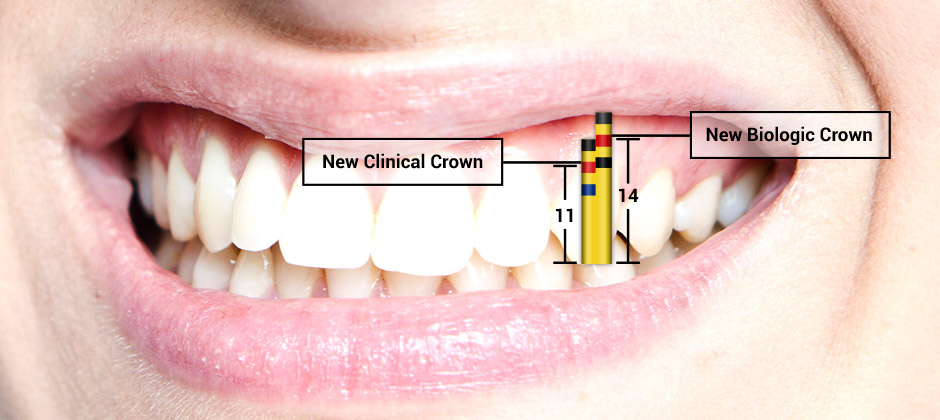There are various kinds of gum related problems that requires surgery to cure it. Dental crown lengthening is a one kind of oral surgery which can be performed by a surgeon known as Periodontist. Dental crown lengthening needs to perform on a single tooth or many teeth or an entire gum line, which depends on the condition of the patient. This surgery helps in exposing tooth structure to restore a tooth properly. It removes excess gum tissues and some bone around teeth. It gives longer the appearance of teeth for those who have small teeth or suffer from gummy smile.
Need for Dental Crown Lengthening
When any patient needs tooth restoration or need a new crown, then he/she requires performing crown lengthening surgery. It is also known as crown exposure. Normally, there are at least 2 mm of tooth surface that gums require between the bone and the crown ( restoration/filling) to prevent food blocking and other such problems. There might be a lack of proper tooth structure to work with if decay is very deep or tooth is broken. For such problems, crown lengthening helps in recreating necessary tooth exposure to prevent filling or crown to be falling off or getting weakened.
Many people have a big gum tissue or gums overlapping around their teeth in the upper side which is known as gummy smile. This surgery is needed to perform to reshape or reconstruct bone as well as gum tissue. It doesn’t improve smile of the patient only, but also helps in improving gum tissue’s health.
After Surgery Benefits
Crown lengthening needs to be performed by a surgeon with long expertise in Periodontics. A patient can enjoy many benefits once crown lengthening surgery carried out successfully. It gives a natural and attractive smile (improve “gummy” smile). It also enhances confidence of the patient and chuck out problems such as baby like teeth or too short teeth. It also recovers overall periodontal health of the patient. Crown lengthening treatment starts giving beneficial result just in a week after surgery. The patient gets fast healing and has to face only a little pain.
Precautions to Take Care After Surgery
Swelling can cause pain and some discomfort after surgery. Apply any kind of ice pack in the area at every 15 minutes for at least a day. Take prescribed medicine with some food as indicated by the surgeon. Take only liquid or soft foods for a few days. The stitches can keep for at least 10 days. Hence, avoid brushing in that area until permitted by the doctor. If loose bandage or bleeding continues or any discharge occurs, contact your Periodontist immediately. Regular follow up visit will help in quick healing. Take proper rest and avoid heavy exercise that affects stitches.
Good to Know
- Teeth’s cleaning is essential before crown lengthening to perform surgical procedures easily.
- The surgery can be carried out on a patient using local anesthesia. Hence, no need to worry about any pain during surgery.
- The complete healing will take around four to six weeks. A proper oral hygiene will help in good recovery.
- After the surgery, some people feel sensitivity while eating hot or cold food or drinks. It goes abate with time.
- Discuss possible risks of surgery with your surgeon to avoid any future complications.
If gums overlapping increases near the bone, and if this condition left untreated, it becomes very painful and causes chronic bleeding and increase periodontal problems. Therefore, timely precautions will help to resolve unavoidable dental problems.




